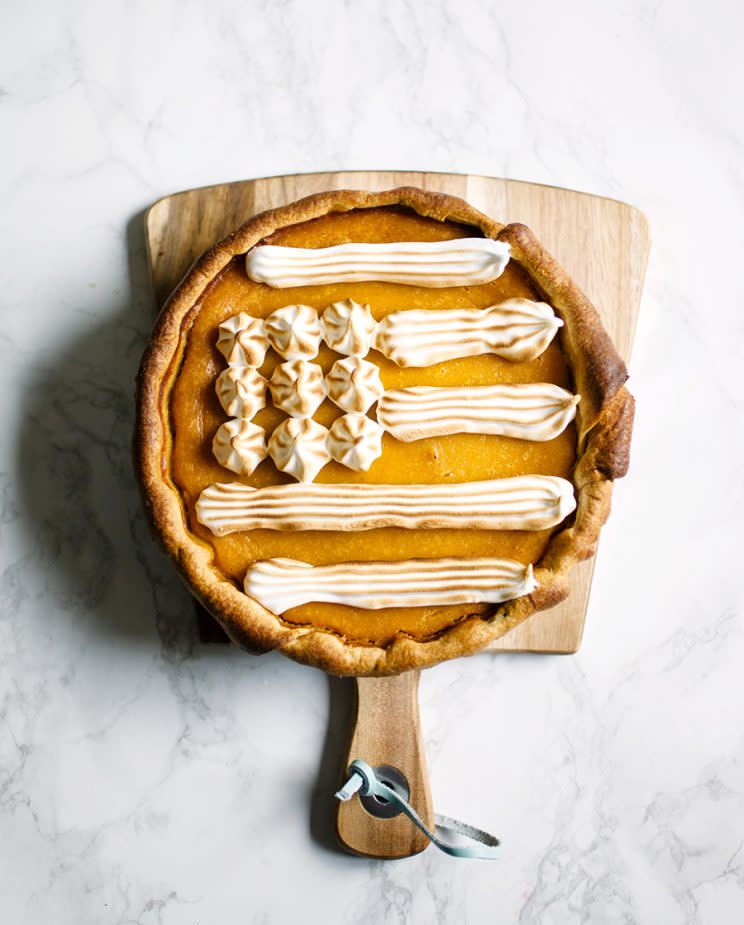How Americans Celebrate Our Different Cultures at Thanksgiving Dinner

“Since the late 19th century, each new ethnic group coming into America has added their own dishes to the Thanksgiving table and used the ingredients from their own cuisines,” culinary historian Andy Smith tells Yahoo Beauty.
Nothing is more quintessentially American or representative of the ethnic diversity of the U.S. than Thanksgiving dinner. Thanksgiving tables across the nation reflect “a culinary tradition that moved from one place to another throughout history, mirroring the shifts and changes underway in America,” Smith says.
The one-off meal in Plymouth, Mass., in 1621 between the Pilgrims and the Wampanoag Indians has evolved through the centuries to reflect the mosaic that is American society today.
This year, more than ever, historians like Matthew Dennis, professor emeritus at the University of Oregon, believe it is important to uphold the values of family, community, and inclusivity that are the hallmarks of the American Thanksgiving.
“Thanksgiving is inclusive and national; it is religious but nonsectarian; it is national, yet private and local,” Dennis says. “It is a do-it-yourself holiday that people can use to celebrate who they are without having to conform to any one idea and without having to make excuses for who they are. Thanksgiving is open to interpretation, and it gives every American the opportunity to be American on their own terms.”
What’s on the Thanksgiving menu?
Antipasto and lasagna are common fare for Italian-Americans.
In Louisiana, locals celebrate their Cajun and Creole history with boudin and andouille sausages, seafood gumbo, sweet and white potatoes, dirty rice, macaroni and cheese, and cornbread.
Some Japanese-American families incorporate traditional favorites like sushi and watercress tofu salad.
Ghanaian-Americans — whose West African ancestors honor a traditional harvest festival called Homowo, which is one of the most important dates on the calendar — celebrate Thanksgiving with traditional yam soups and stews.
Recipes for Korean-American Thanksgiving turkeys call for soy, ginger, and honey glazes, and some families skip the turkey entirely and serve duck. A twist on classic squash soup can include curry.
The turkey has dominated the Thanksgiving table since the 19th century, Smith says, but through the decades, it has been appropriated by different ethnic groups and prepared according to their tastes and culinary traditions. Some Mexican-Americans marinate the bird in a mole sauce, for instance. Turkeys are also sometimes seasoned with zaatar and sumac, two important spices from the Middle East, while tandoori turkey is a staple in Indian households across the country.
Of course, many Americans celebrate what they think of as a traditional Thanksgiving feast, but canned cranberry sauce might not be the most authentic complement to the meal. Michael Scibilia, chief merchant at Dean & DeLuca, believes Thanksgiving should celebrate the sharing of ingredients and foods between communities. As an homage to that, Dean & DeLuca is offering oysters and venison, the “wild” foods the Wampanoag Indians would have brought to the iconic Thanksgiving meal they shared with the Pilgrims in 1621, Scibilia says — along with recipes for side dishes combining these foods with more European ingredients.
Does your family prepare a strictly traditional feast, or do you mix it up with your family’s favorite spices and dishes? Let us know in the comments!
Let’s keep in touch! Follow Yahoo Beauty on Facebook, Twitter, Instagram, and Pinterest.

